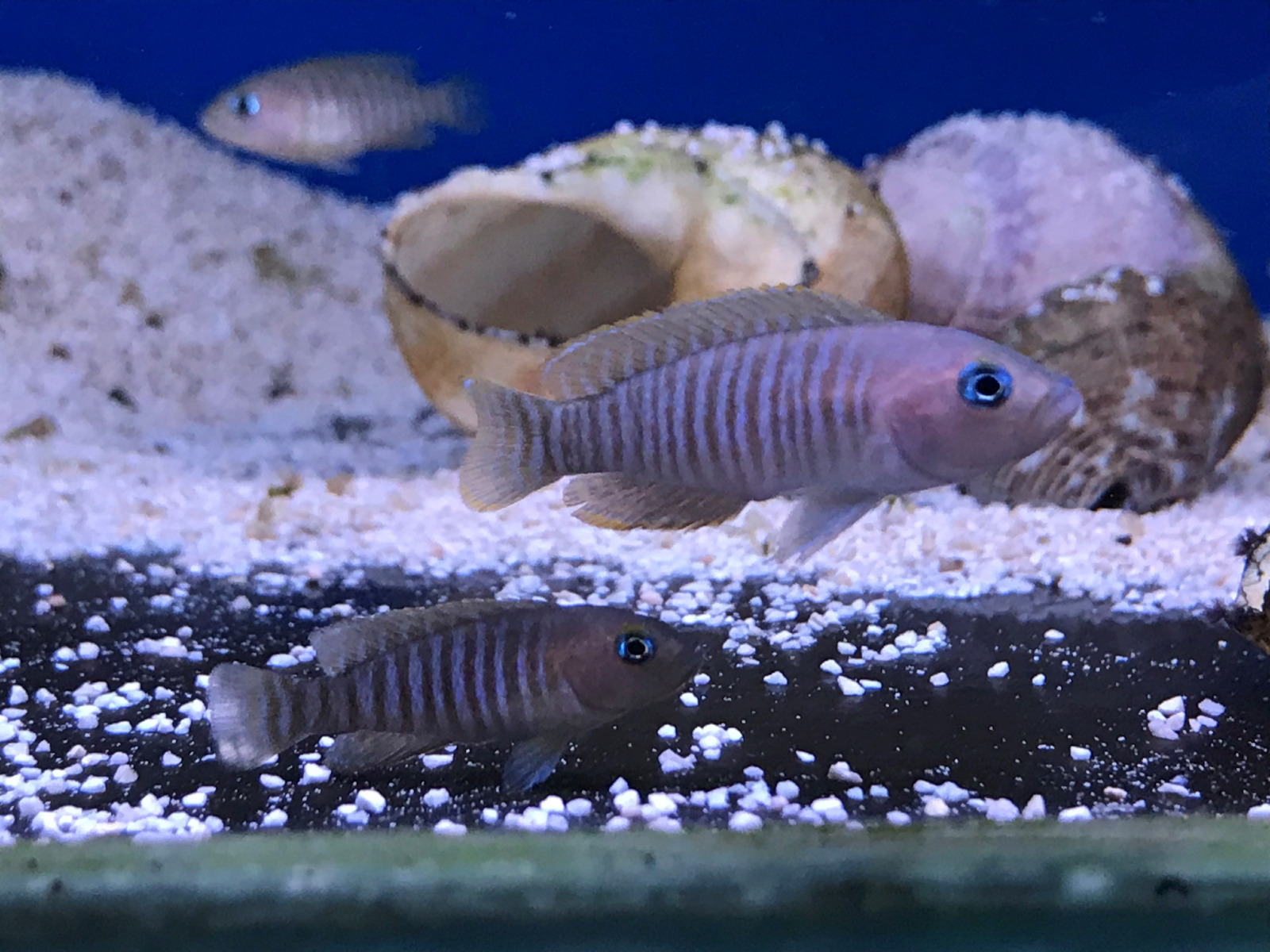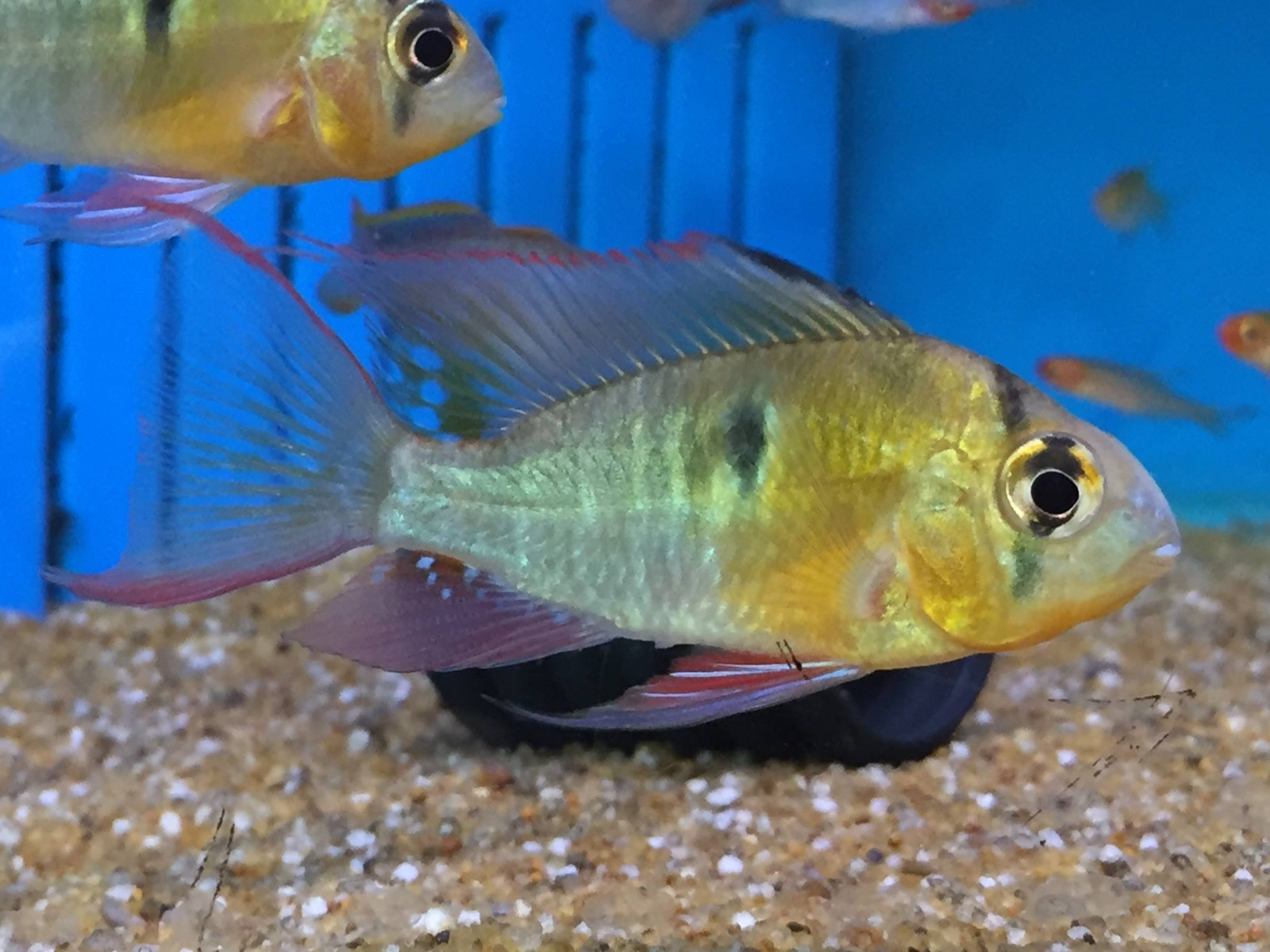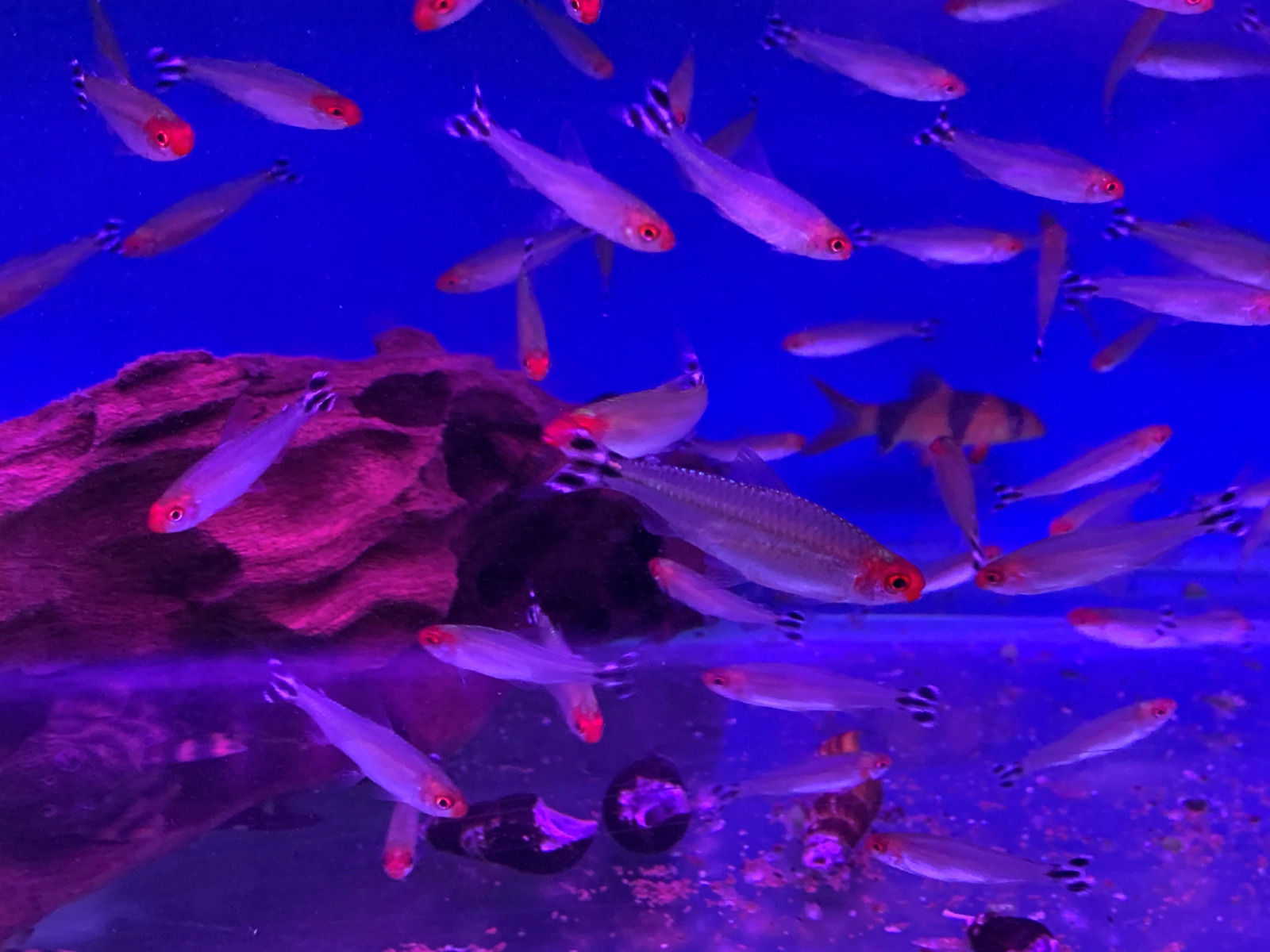Time for a new project?
It’s been the same ever since I first walked into a fish shop, there’s so many choices that even when I had fifty tanks on the go I didn’t have enough room. With the prospect of another few weeks at home, now is a great time to look at some wish list fish.
Not all fishes are tiny shoalers and a common mistake is going for a small aquarium, which then restricts choice as your experience leads you to consider other options. If you can find the space, then a tank around a metre long provides room for the communities denied by nano tanks.
Larger aquaria give the room needed for dwarf cichlids like these Bolivian rams (Mikrogeophagus altispinosa) to hold territory without harming smaller tank mates.
When I think of some of my dream fish species, they were often impossible to keep in the hard, alkaline water where I lived. Nowadays the availability of RO water removes this obstacle and no matter what your tap water brings you, you can duplicate pretty much any environment. If you have soft water and an interest in hard water fishes, you can use mineral buffers to manipulate things. Bear in mind that stability is a key aspect here and your pets won’t thank you if they’re being exposed to wide fluctuations in pH and hardness.
One of the advantages to visiting a local store is that the majority of the livestock will be housed in local tap water and any exceptions can be seen first hand.
Any fish that can be housed in a small aquarium can be added to a larger one and this means you can start to create the impact that comes with numbers. Choosing your favourite tetra or barb and basing a community around twenty or more can result in a very striking display. Often the effect is spoiled by housing too many different species together, so try a shoal tank at least once and see what you think. Of course, these ‘wallpaper fish’ can serve as a great backdrop to more interesting species that don’t have the same immediate appeal, such as the cryptic but glamorous L number plecs. Even Corydoras catfish are happiest in large groups of single species and should really be kept in the same numbers that are more common for tetras.
Rummynose tetras (Petitella bleheri) are happiest in big shoals and look great in large numbers.
Perhaps you’ve kept a community tank and are ready for something with a bit more bite? For those of you with hard, alkaline tap water (or a willingness to add minerals) I can heartily recommend Tanganyikan cichlids. Species such as Fairy cichlids (Neolamprologus brichardi) will pair off and raise a brood, which then help to protect their younger siblings as they become a large extended family. There’s few sights more enchanting that tiny young fish being looked after by slightly less tiny fish. The dark side to this strategy is that it can be too successful, with other species getting pushed out of their preferred rocky habitat.
The answer is to provide limited habitat and avoid adding competition. Instead of running rock work across the back of the tank, provide a pile at one end and leave the rest of the tank as an expanse of open sand. This open sand can be furnished with empty snail shells which are the natural home of the specialist group known as shell dwellers. These cichlids are small, having adapted to live in the cramped confines of a snail shell and are mostly either haremic or colonial like the brichardi. These are the easier to manage, as they don’t behave so aggressively towards one another and fry are tolerated within the group. I can heartily recommend Neolamprologus multifasciatus as a colony in as many shells as you can provide. They may be tiny but they can dig like the biggest of cichlids and their shell village will soon sit on the bottom glass! Apparently this favours the flow of plankton to the colony in the wild.
If you’re after a set up that’s not so heavily based around sex and violence, perhaps a high-velocity rapids look would appeal? Many of the L number plecs are found in fast moving water and will enjoy surfing the currents whilst clinging effortlessly by their mouths to rounded rocks or suitable bog wood. As ever, duplicating the natural habitat of a fish allows it to show the beauty of its adaptations and you’ll spend hours watching them do their thing. Many of these habitats feature high oxygen content and temperatures more in the range where we usually keep discus, which can reveal that a number of these catfish are suddenly happy to breed when provided with these conditions. If you like things a little cooler, a similar stream tank can house danios or barbs such as the Redline torpedo barb (Sahyadria denisonii). A tank of barbs is always filled with movement and action, especially as they play in the current.
Looking at the sheer variety of species available and the fact that you could base an interesting aquarium around most of them, you’ll see why it’s easy to run out of room before you run out of options. There’s always a new challenge or a fish you haven’t kept. With a few suggestions we’ve barely scratched the surface...

Tanganyikan shell dwellers like these Neolamprologus multifasciatus fit a lot of cichlid character into a tiny package.




